featuring:
Josie Le Balch
- from:
-
Josie & Next Door
- recipe:
- Corn succotash w/ pork chops & herb oil
10 West to Cloverfield & make a left. Another left on Pico + a minute’s drive and we’re at 2424. Hello, Santa Monica. It’s a simple façade but look for the big brown awning that says ‘Josie’ jumping out of its box.
We park in the rear, admiring the rustic wooden door but minding the faded golden plaque (‘PRIMARY ENTRANCE ON PICO’). Follow the guiding lights, rusted metal boxes with cool hand-cut graphics, to the front door.
We enter. Love it. Simple & elegant, greeted by an open kitchen so close you can shake Josie’s hand over the counter. The front of the house puts you at ease, but don’t miss the back half, with the bar and fireplace and beautifully framed old photos. The whole place has a great, intimate ambiance (even in the kitchen!) that just stays with you…
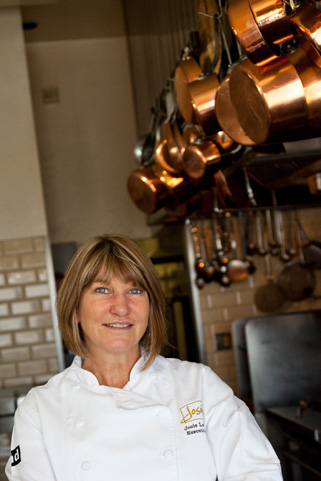
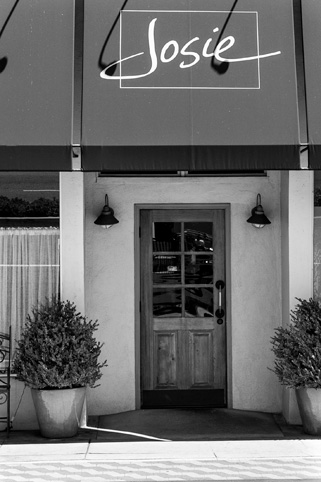

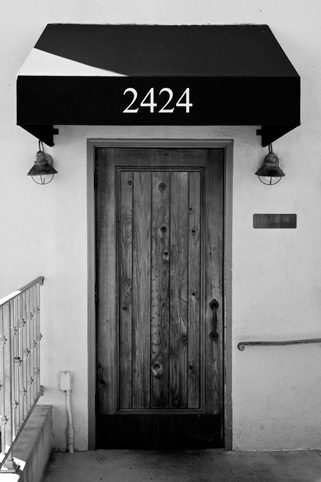

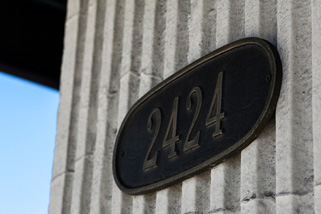
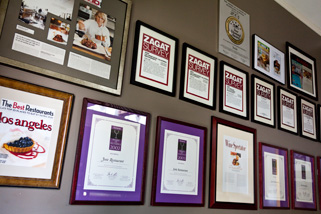
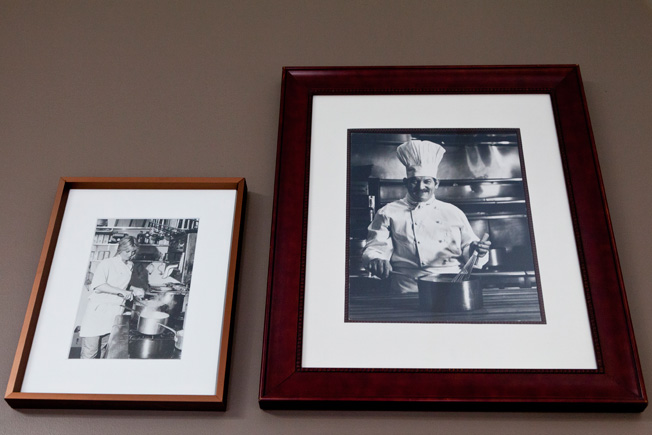

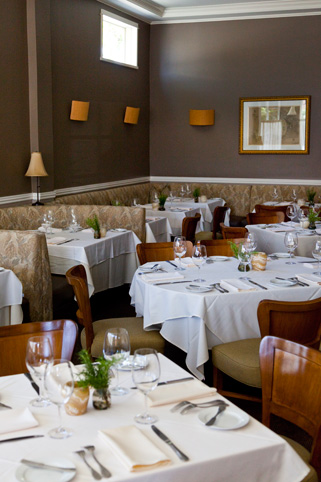
When did food capture you? My dad was a chef and a farmer, so cooking has been part of my life pretty much since I was born. Being European, for him food and farming went hand in hand, so it was always kind of prevalent in our household.
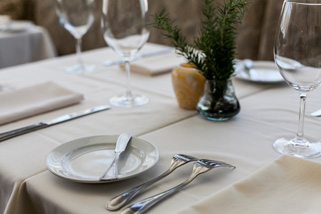

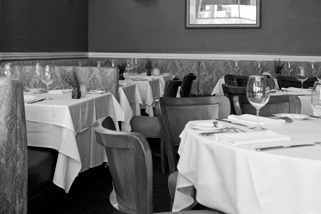
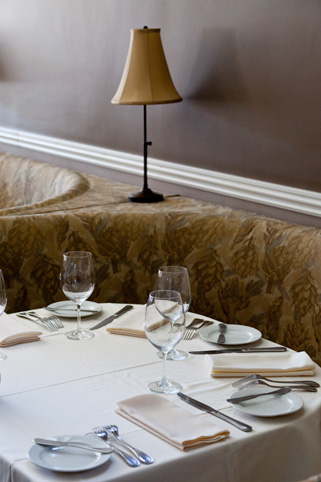
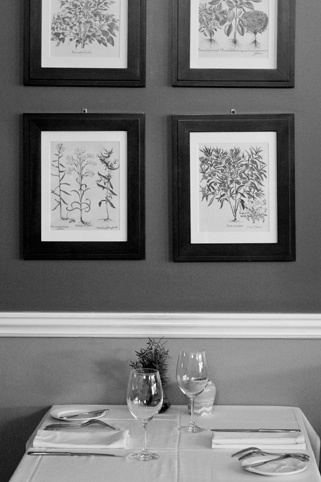
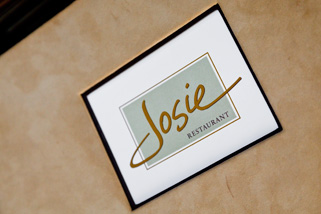

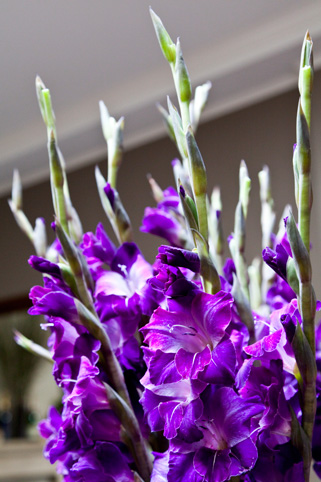

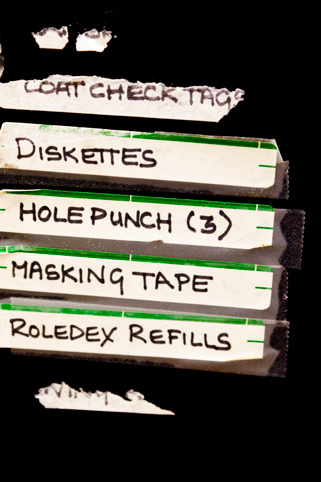
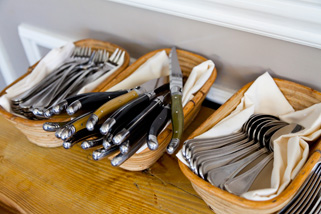
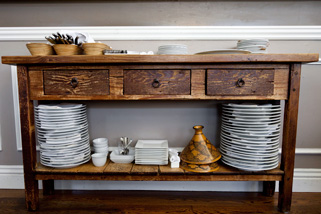
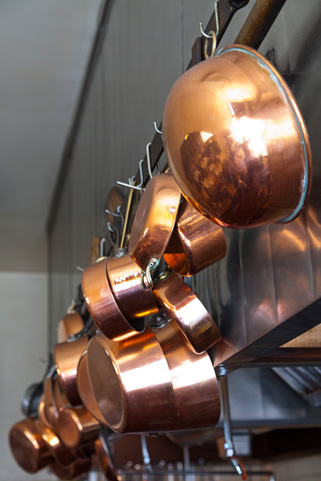
When did you discover that food had power? Having worked in kitchens since I was really young, because my dad had a restaurant and cooking school growing up, some of the first times I cooked it was in that environment. Not just cooking for boyfriends or friends and those kinds of things at home, but actually being in a dining room and having somebody be so excited about something that you simply put together. I guess I almost took it for granted because I did grow up in a house where food was very prevalent. To see how excited people were about it, I think that’s where the sense of power is for me.

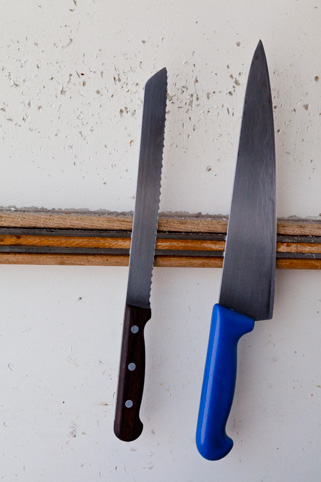

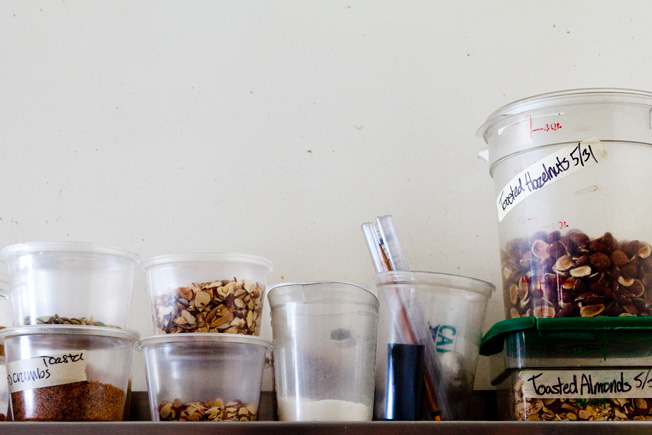
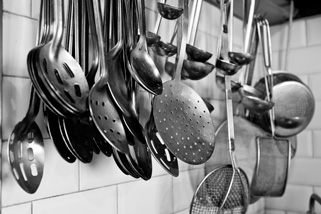
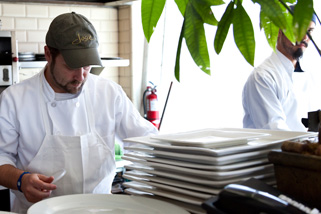

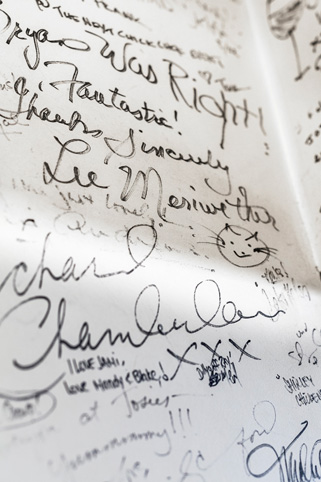
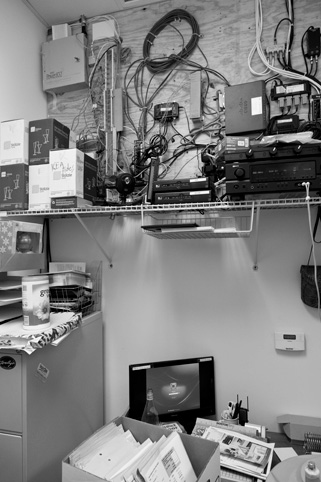

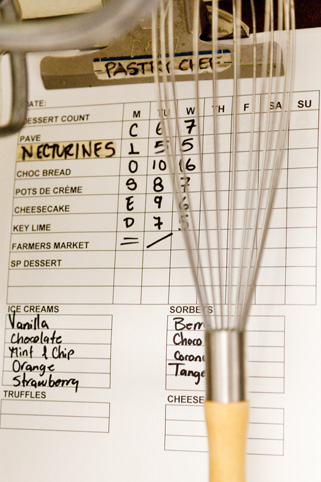
Do you take risks in your cooking? I grew up with a very haute cuisine style of cooking. My dad started one of the first cooking schools in Los Angeles and everything was very synchronized and he knew what he was going to make the next day, using all the product that was left. One of my first jobs outside of my family’s restaurant was an opportunity to work with Wolfgang Puck when he was just starting out at the original Ma Maison. The first day I was on the job he was like, ‘come in the walk-in with me’ and he was trying to figure out what to make the next day for his first cooking class there. Working with Wolf was a very empowering experience. You know, once you have the basics and understand how food goes together, you can kind of explore and experiment with anything.
Now, fast forward from Ma Maison to me opening Josie 12 years ago and having a couple young people working with me who were curious about food, asking questions like ‘can we do this and this?’ And it’s like, well, no you can’t put that with that–it won’t work. And they ask, ‘well why?’ I’m all about mentoring and teaching and being open in the kitchen. In some kitchens you didn’t ask why. I’m constantly experimenting with food and taking risks because I have been cooking for over 25 years. It keeps things interesting.
It’s like a candy store, a big toy store, going to the market and finding something that hasn’t been grown out here or experimenting with combinations. At Josie and Next Door, we’re making our own crazy vinegars and Worcester sauce and just fun stuff—fusions and the like. It’s kind of a risk whether it’s going to work or not, but I’m always taking risks, hoping people like it.


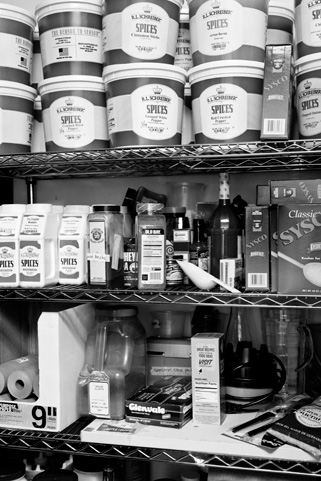
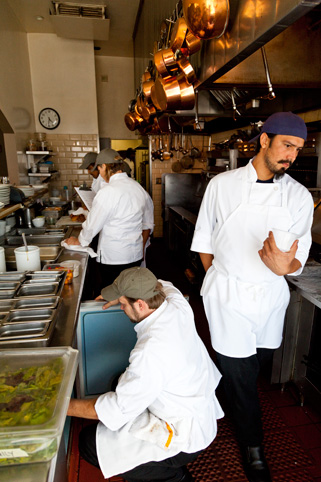


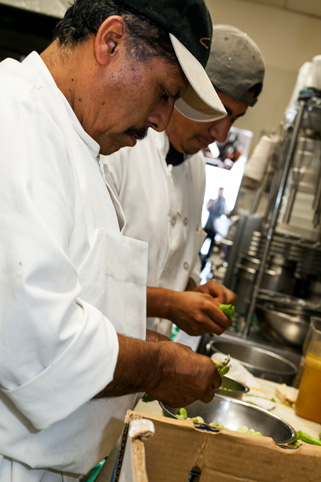
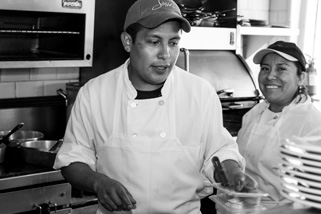
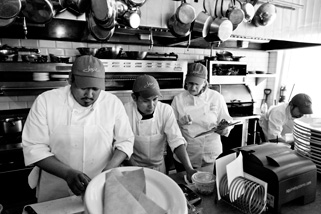
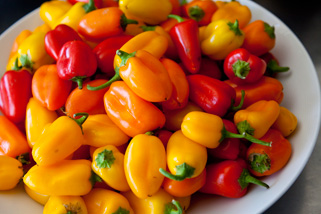
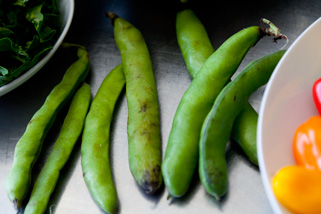
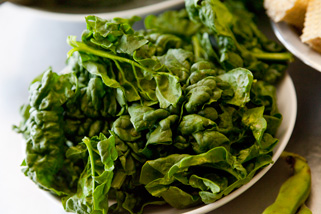
How important is it to be connected to local farms? I think it’s extremely important. For me, personally it’s a life blood. Having been involved with the local farmer’s market for so many years, I’m really enjoying seeing that people are still just discovering it — going and finding their own food, making it a social event like it is in Europe. You go to the market once a week and there are baby strollers and you see the same people who you may not even know, but you say hello. That connection, I think for people, to find a product and understand where it comes from is important.
I tell people when I take them to the market to talk to the farmer, ask him what he’s got in the ground for next month so you make the connection with them, talk with them. Don’t be intimidated. For us, it’s a no brainer, it’s just part of the fabric of our cooking.
We’re so spoiled in LA, in California anyway, because when you talk about seasons… we’ve got how many days of sunshine? Things are growing all the time. And it extends beyond produce and across the menu in terms of which farm you buy your meat or fish from.
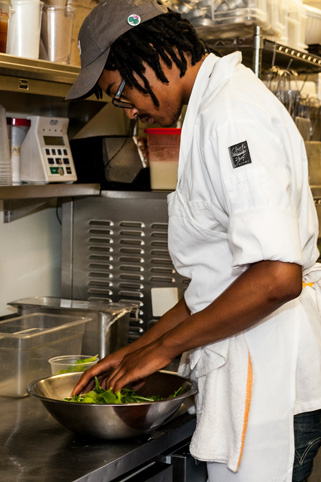

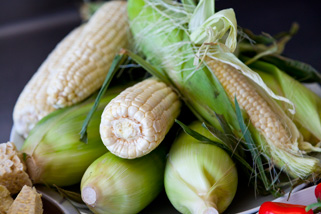

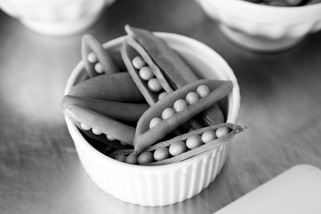
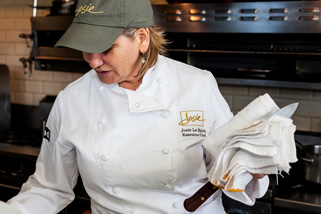



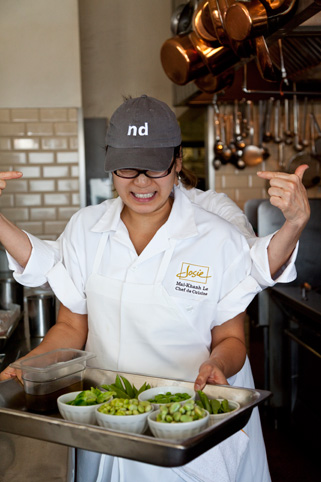
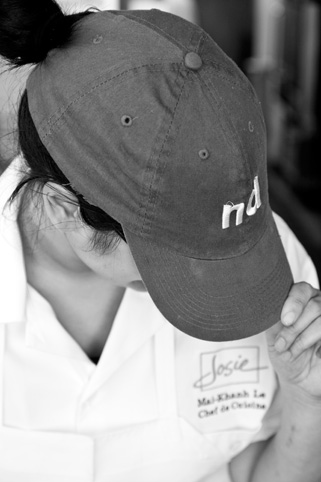
Who is the most important person in your kitchen? Me [laughs]. No but seriously, I think different people are important for different reasons. The person that’s the most powerful for me right now is Mai Khanh Le, my Chef de Cuisine. She is both my right and my left hand. She’s doing all the ordering and most of the production with me, she’s running the other side with me. She’s probably one of my strongest.
Also Jonna Jensen, who is my pastry chef. We’ve been together for 20 years. The first thing people eat when they come here is the quiche and the last thing they have is dessert, so I think that’s powerful. I have the luxury of having a pastry chef. Most restaurants this small can’t usually afford them, we make our cuts in other areas so that we can. I always have said, and my dad taught me this, it’s the power behind the throne. You know, it’s the guys behind you that make you strong.
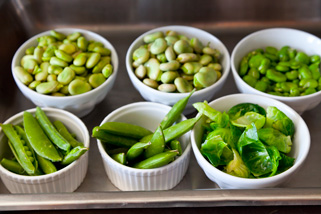

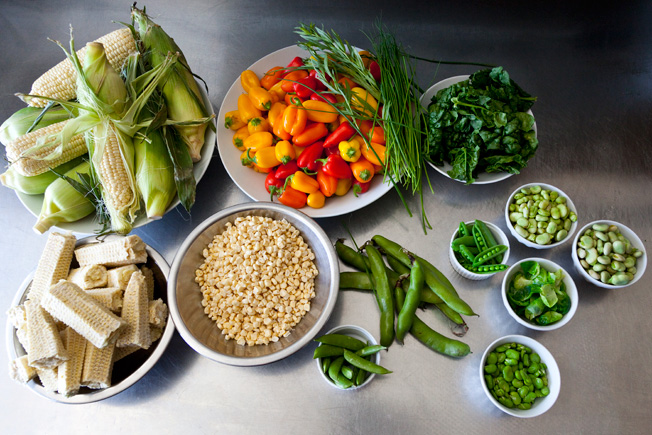
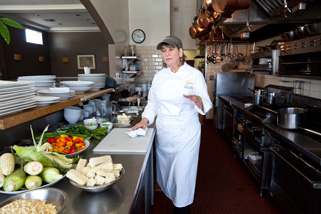
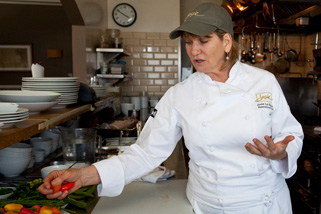
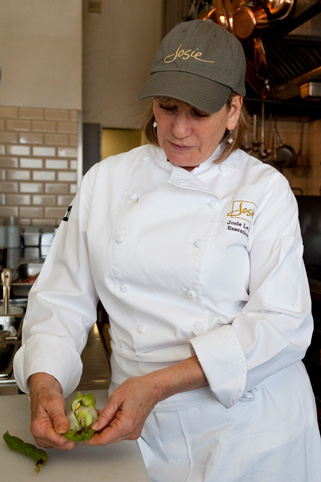
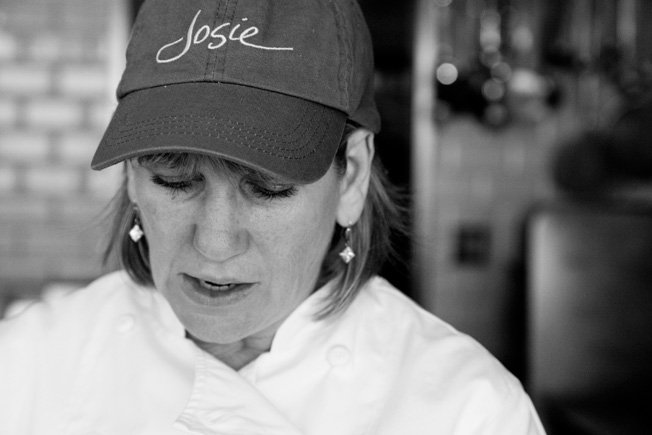

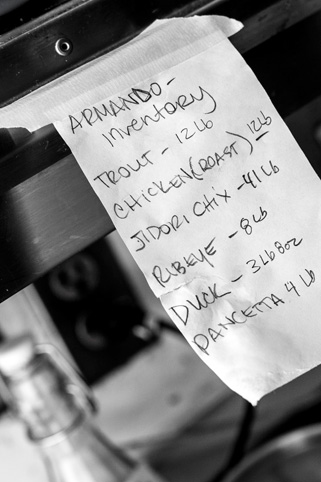

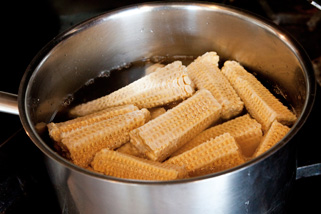
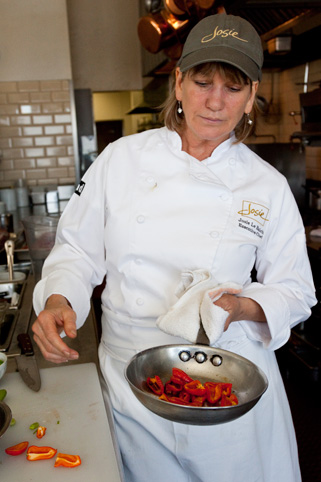
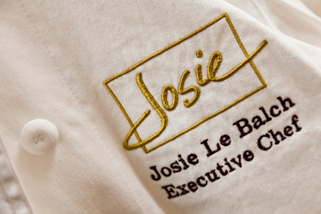

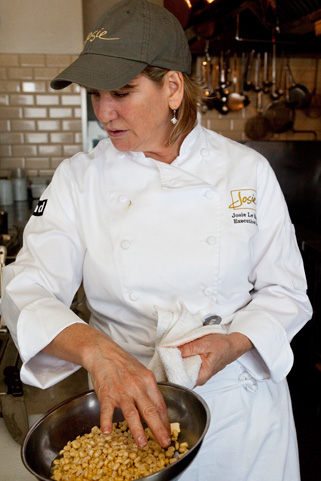
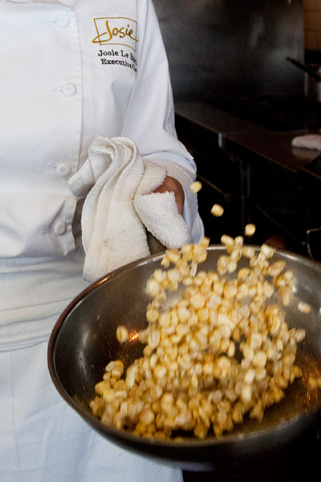
Where do you get inspired for your classic cuisine and comfort food? From all over. I get it from the market, I get it from people that I am around. You know it’s funny how tastes and styles come around again. One cool example of this with my food is this mushroom sandwich that we make, that I’ve done for years. Most of the time, it’s made from domestic mushrooms that are sauteed and just done in kind of a classic cream sauce with puff pastry. It’s a very old, old French dish and we’ve lightened it up by calling it a sandwich and playing around with it. Sometimes we’ll just get a particular mushroom that will come in and we’ll incorporate that. I get my inspiration from all over and from my own mood in the moment. You know if it’s cold out, if it’s hot out, you know what you feel like eating.
As I mentioned, I grew up with haute cuisine, a classic style French cuisine, working with my father. Then when I was about 30 I started working with a guy named Francesco Antonucci who was at Remi restaurant. They have one in New York and they opened one in Los Angeles. It was one of the extremely well received New York restaurants that came to LA, because over the years a lot of them came and left. At Remi, they were doing Venetian food at a time when a lot of people were doing Italian food. Since I had done French food for 20 years already I wanted to do something else, so I went and worked with him and then kind of learned another style of cooking. A lot of their stuff was kind of rustic and basic, not over manipulating the food, like the French particularly do.
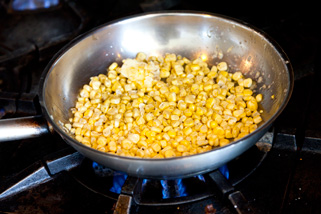
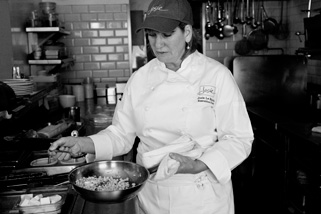
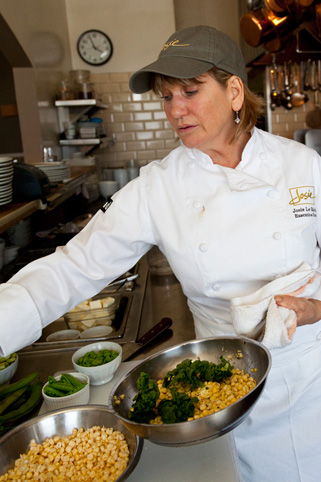

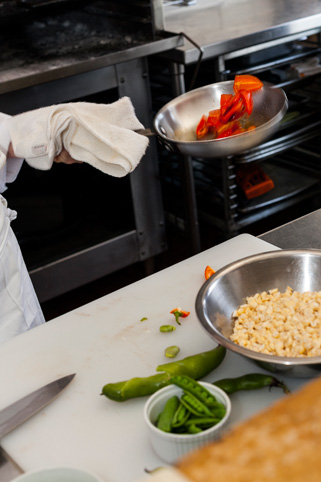
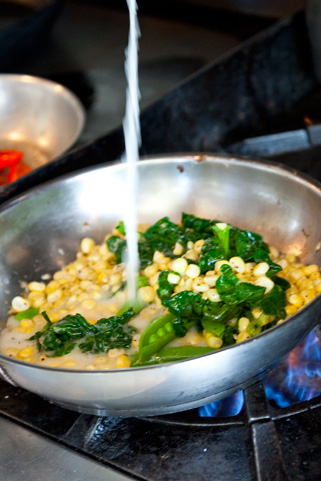
the recipe:
Corn succotash (w/ pork chops & herb oil)
- 3 tbsp. olive oil
- 6 c. fresh corn kernels (1 cob is about 1 c. kernels)
- 1/2 c. diced red bell peppers
- 1 c. corn stock (see recipe)
- 1/2 c. heavy cream
- Dash Worcestershire sauce
- Dash Tabasco sauce
- Salt & pepper to taste
- Chopped fresh flat leaf parsley leaves and chives for garnish
- Cut the kernels from the corn and reserve.
- Reserve the corncobs for the stock.
- In a sauté pan over medium-high heat, add olive oil, and saute red peppers until they are tender, about 5 to 8 min.
- Add corn and continue cooking while stirring until the corn is cooked, about another 5 to 8 minutes.
- At this point, add the corn stock and cream, and, if desired, any other pre-blanched vegetables—Fava beans, English peas or even spinach leaves.
- At this point adjust seasoning and add a dash of Worcestershire, Tabasco, and salt and pepper.
- Garnish with chives, parsley, tarragon or any of your favorite herbs.
Corn stock
- 10 corncobs (or more if you have them)
- 1 tsp. black peppercorns
- 1 tsp. salt
- 3 qt. water
- In a large, heavy pot combine 3 qt. of water, corncobs, peppercorns, and salt and bring to a boil, skimming with a spoon to remove any foam that rises to the surface.
- Reduce the heat to medium-low and simmer uncovered for about 1 hour.
- Remove the stock from the heat and strain through a fine mesh strainer.
- Discard the solids and reserve the stock.
Pork chops
- 6 ea. 10 to 12 oz. pork chops
- 4 tablespoons herb oil (recipe below)
- Salt & pepper
- Place pork chops on a large platter and season with salt and pepper, drizzle with herb oil and cover with plastic wrap.
- Allow seasoned pork chops to sit 1 hour at room temperature before grilling or pan searing.
Herb oil
- 1/2 bunch flat leaf parsley
- 1/2 bunch oregano
- 1/2 bunch rosemary
- 1 c. olive oil
- 1 c. grapeseed oil (or nice neutral-flavored vegetable oil)
- In a large bowl, combine oils and set aside.
- Pull the leaves off parsley, oregano, rosemary and place on cutting board.
- Working in small batches, chop herbs and place in bowl with oils and mix. This will prevent the chopped herbs from oxidizing and turning black.
- Place herb oil in jar with tight fitting lid. Keeps in refrigerator for 2 weeks.
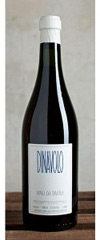
wine pairing
w/ Organic Wine Exchange + guest wine expert
Alice Feiring says: 2007 Dinavolo Vino da Tavola. This so called orange wine from northern Italy (it gets its color from extended contact with the grape skins during fermentation) has the full-bodied weight to take this rich dish, but has a fantastic firm edge to cut through the delicious combo of cream, corn and pork.

Alice has been published in most of the glossies in this country as well as the New York Times. She is the author of two books: The Battle for Wine and Love (Harcourt) and Naked Wine (Perseus Books). When not on the road learning about wine, Alice is working on her personal writing, rereading Letting Go or Hudson River Bracketed, and dreaming about a cellar full of Domaine Romanée Conti. You can find Alice on Twitter at @alicefeiring, or her blog The Feiring Line.

